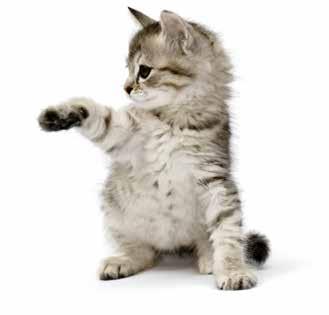theMillwatermag
vetspeak When cats can’t pee!
Some pet problems are always an emergency, and perhaps at the top of the list is feline urinary obstruction. Anything that interferes with the outflow of urine from the bladder through the urethra can result in an obstructed urinary tract. This is mainly a problem of male cats, as they have a much narrower outflow path than females do. When a cat is unable to urinate, urine continues to build up in the bladder. This can be painful and results in the accumulation of waste products in the body. Without treatment, cats who are blocked will die. Sometimes it is not easy to tell if a cat is blocked or just is experiencing bladder inflammation. Signs that your cat may be having a problem include: • Frequent visits to the litter box with little or no urine production • Straining to urinate • Vocalizing while trying to urinate • A painful abdomen • Vomiting and/or refusal to eat • Lethargy or hiding
Symptoms can be difficult to pick up. For example, it is not uncommon for owners to think that their cat is constipated (because it is straining to toilet) or been hit by a car (because they are so painful and unwilling to move). There are a many causes of urinary obstruction and not wanting to go outside (unsettled weather, moving house) can exacerbate the underlying cause, so it is important to ensure that you have a litter tray in the home if you think your cat is not wanting to go outside. At this time of year, we see an increase in these cases. Urinary blockage in cats is a serious business and a common emergency. If you think your cat might be obstructed, it is crucial to get him/her checked as soon as possible. Jemma Hedges





















